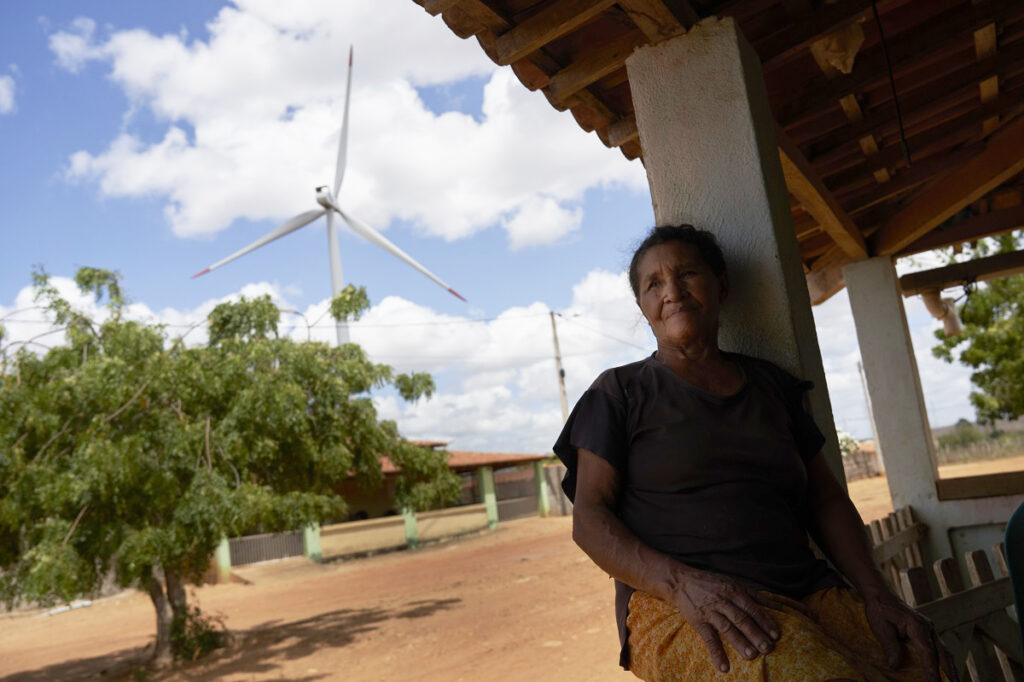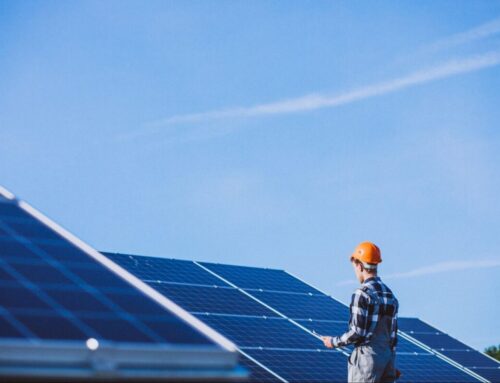Side effects of the energy transition in Brazil
November 4, 2024
In recent weeks, São Paulo has been featured as the most polluted metropolis in the world. The haze enveloping the city of 11.4 million inhabitants originates from the smoke of wildfires ravaging the country and from atmospheric pollution. In this dramatic context, amid terrifying news about the growing number of climate migrants, the need for more sustainable energy sources is impossible to ignore. Poliana Dallabrida reports.

Credits: Mariana Greif/Repórter Brasil.
Brazil represents a vibrant market for investment in energy transition projects. In 2023, the country was ranked sixth among the top 10 economies for such investments, following China, United States, Germany, UK and France. The country saw USD 34.8 billion injected into projects, nearly all of it in renewable energy ventures, according to data from the research firm Bloomberg NFE. Last week, the company’s global head of energy transition described Brazil as the ‘golden girl’ of the global energy transition.
In the first year of his third term, President Lula da Silva announced investments of R$ 50 billion to implement the country’s largest energy transition programme, focusing on the construction of wind and solar energy parks in Brazil’s northeast. With wind and sun year-round, the region accounts for 83% of the country’s production of energy from these two renewable sources.
The northeast also holds the largest share of Brazil’s poor population and is home to the two states with the lowest Human Development Index among the 27 federal units. Given this context, wind and solar projects are viewed favourably by policymakers.
However, the social and environmental costs of this energy transition are often overlooked in governmental and business calculations. Damage to biodiversity, land disputes, threats to traditional lifestyles and impacts on water supply are among the side effects already observed in communities adjacent to such projects.
Abusive and irregular contract clauses
In March, an investigation carried out by the NGO Repórter Brasil identified that 46 wind energy companies – 19 of which are foreign – control 226,000 hectares of land in Rio Grande do Norte, one of the nine states in Brazil’s northeast. Control over the land is managed through lease agreements signed between the companies and residents.
One of these residents was José Bernardo Sobrinho. Illiterate, Sobrinho signed a contract ceding part of his land for 37 years, with the possibility of renewal for an additional 22 years. The farmer’s widow, Severina Rodrigues da Silva, is prohibited by the wind farm’s managing company from planting beans on her land, now marred by a wind turbine. The nearest tower is only 220 meters from Severina da Silva’s home.
A technical report by the Institute of Socioeconomic Studies (Inesc), published in October 2023, analysed 50 contracts signed by wind energy companies in Brazil’s northeast and identified clauses that are disadvantageous, irregular and abusive towards the communities. Among these are long-term contracts with automatic renewals, penalties of up to R$ 5 million for farmers wishing to break the lease, minimal compensation and variation in the monthly rent paid to residents based on the company’s earnings from the produced energy.
‘In summary, the actions of companies to install wind energy generation projects in the region, with the support and participation of public authorities, reproduce the exclusion of populations directly affected by the ventures, suppressing their right to participation and distancing them from decision-making processes,’ states the report.
Risk to water springs
Another investigation by Repórter Brasil revealed that a company’s plans to build the country’s largest wind and solar energy complex disregard the potential impact on water supply, including the burial of water springs.
In Bahia, also in Brazil’s northeast, a major renewable energy project plans to install 405 wind turbines – each three times the height of the Christ the Redeemer statue in Rio de Janeiro – and 476,000 solar panels. The park will have the capacity to produce the equivalent of one-quarter of the energy generated by Brazil’s Itaipu hydroelectric plant, the largest in the country and the second largest in the world.
A study being conducted by researchers from the Federal University of Vale do São Francisco and the municipal government of Jaguarari, one of the areas affected by the megaproject, has already identified 63 springs in the region. However, the technical report that supported the project’s license only mentions three springs, a figure contradicted by the municipal environmental secretary.
Researchers interviewed by Repórter Brasil suggest that the installation of wind turbines in the region will result in the deforestation of hilltops, putting water springs at risk. Other watercourses may be buried during the construction of roads necessary for transporting the massive turbine components. The project, scheduled to begin operations in 2027, outlines the need to construct 446 kilometres of internal roads, each at least 11 metres wide.
Since 2023, the State Public Prosecutor’s Office of Bahia has been monitoring allegations of irregularities related to the project.
Socioenvironmental safeguards for renewable energy
Dissatisfaction and protests have led to the creation of various organizations questioning the impacts of these large projects, such as the Movement of Those Affected by Renewables (MAR) in October 2023. ‘We are trying to build a network not to oppose renewable energies, but to advocate for alternative models, for a just energy transition where populations are considered,’ said Francisco Adilson da Silva in an interview for Terra website. Silva is the coordinator of the Rural and Urban Assistance Service of Rio Grande do Norte, one of the organizations endorsing the MAR manifesto.
In January of this year, 30 civil society organizations, research groups and communities affected by renewable energy production in the northeast released the document ‘Socioenvironmental Safeguards for Renewable Energy’. The document outlines 100 legal measures that should be taken to mitigate socio-environmental impacts in Brazil’s wind and solar sectors.
As highlighted by the news portal Nexo, the safeguards aim to address issues with existing projects and prevent the recurrence of these problems in new ventures. Besides proposing changes to Brazilian public policies, the organizations behind the document emphasize that the measures can be voluntarily adopted by companies in the wind and solar sectors, and by project financiers.
Among the recommendations is that projects should not be installed without community consent or in areas used for food production and water access. Regarding wind turbines, the safeguards stress the need for a minimum distance of two kilometres from properties. ‘If it’s only about energy, this transition will hardly improve life,’ the document emphasizes.
The recurrence of problems with renewable energy projects across different locations in Brazil demonstrates that the “side effects” of the energy transition are quite predictable. With the rationale of halting the advance of fossil fuels and producing supposedly “clean” energy, sacrifice zones are created, resulting in irreversible environmental damage and the displacement or alteration of entire communities’ ways of life.
Recognizably the weaker side of a billion-dollar investment equation, communities are demanding the fulfilment of fundamental rights. Global discussions on the subject must consider these populations to ensure that, in the future, a new category is not added to the global climate crisis: the energy transition migrants.
Search
RECENT PRESS RELEASES
Related Post




